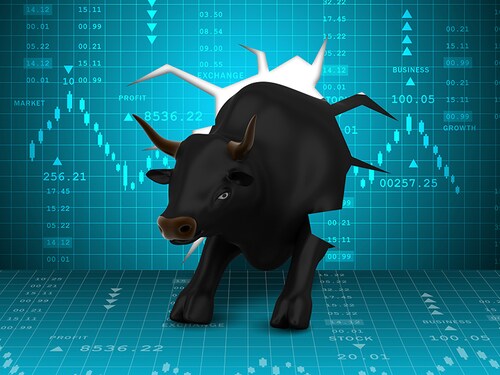Deciphering a healthy stock market rally
As intelligent investors, we must analyse tangible factors to conclude whether the given stock market rally is healthy, or if a bubble is being formed


The Indian stock market has witnessed seven recorded bull market rallies since 1984. The first rally, which mirrored the decade-long rallies that we have become accustomed to was post the tech-bubble burst in 2003. While each rally comes to an end due to different factors, the salient features of the rally itself are generally the same. In the most basic terms, the stock market’s performance should ideally be a function of its underlying elements i. e the companies that make up the stock market. Post India’s liberalisation in 1992, the stock market has seen a strong correlation with global markets. These two factors, fundamentals of the Indian economy and developments in the global markets, form the basis for the direction of the stock market. Another key factor, often overlooked, is human sentiment. “The market is a pendulum that forever swings between unsustainable optimism (which makes stocks too expensive) and unjustified pessimism (which makes them too cheap)," American writer Jason Zweig, author of The Intelligent Investor, said. As intelligent investors, we must focus on tangible factors that we can analyse to conclude whether the given stock market rally is healthy, or a bubble is being formed.
Benchmark indices: A barometer for the economy
In a perfect world, the stock market should rally when the economy does well and vice versa. A common barometer to judge the state of the economy is ‘benchmark indices’. For example, in India, Nifty50 and Sensex are the two benchmark indices. These two indices are made up of the 50 and 30 largest companies in the country respectively and it is understood that their relative performance as a whole is a fair representation of the state of the economy. Therefore, to identify a healthy rally, one can focus on analysing:1. The fundamentals of the companies that make up the benchmark2. The general state of the economyIf these two factors are in alignment, one can be relatively sure that the stock market will move in the direction indicated.
Analysing an economy to gauge the rally
The most efficient way to analyse the state of an economy is to breakdown the factors that contribute to the economy’s GDP.
Corporate investment and performance
The first component of calculating GDP is corporate investment. In this context, two factors are measured: Fixed investment and change in inventory levels. Fixed investment refers to money spent on building infrastructure, equipment and other capex that have the potential to increase the output potential of the company. Change in inventory levels is the second metric tracked. New orders, which lead to an increase in inventory levels, is indicative of a rise in demand and is therefore added into the GDP calculation. The third point, which is not a contributor to GDP calculation but is relevant in this context is corporate performance or the growth in net profits. Ideally, if a benchmark index/stock is rallying, its underlying companies must also show a growth in net profits but this is not always the case. For example, in the recent Nifty50 rally up to its peak on January 20, 2020, the index was forming a new high almost every other week but the performance of the underlying companies was dismal. The contribution of the bottom line of most company’s income statement to the GDP was diminishing every quarter. 


The final component of the GDP equation is net exports. While the subtraction of imports from GDP is generally considered to be a negative sign, it is not necessarily true. They may, for example, allow an economy to better use the natural resources available at its disposal. In the context of our example, India has been a net importer of goods for many years and this value has increased further driving the GDP calculation down. 
First Published: Aug 31, 2020, 13:03
Subscribe Now